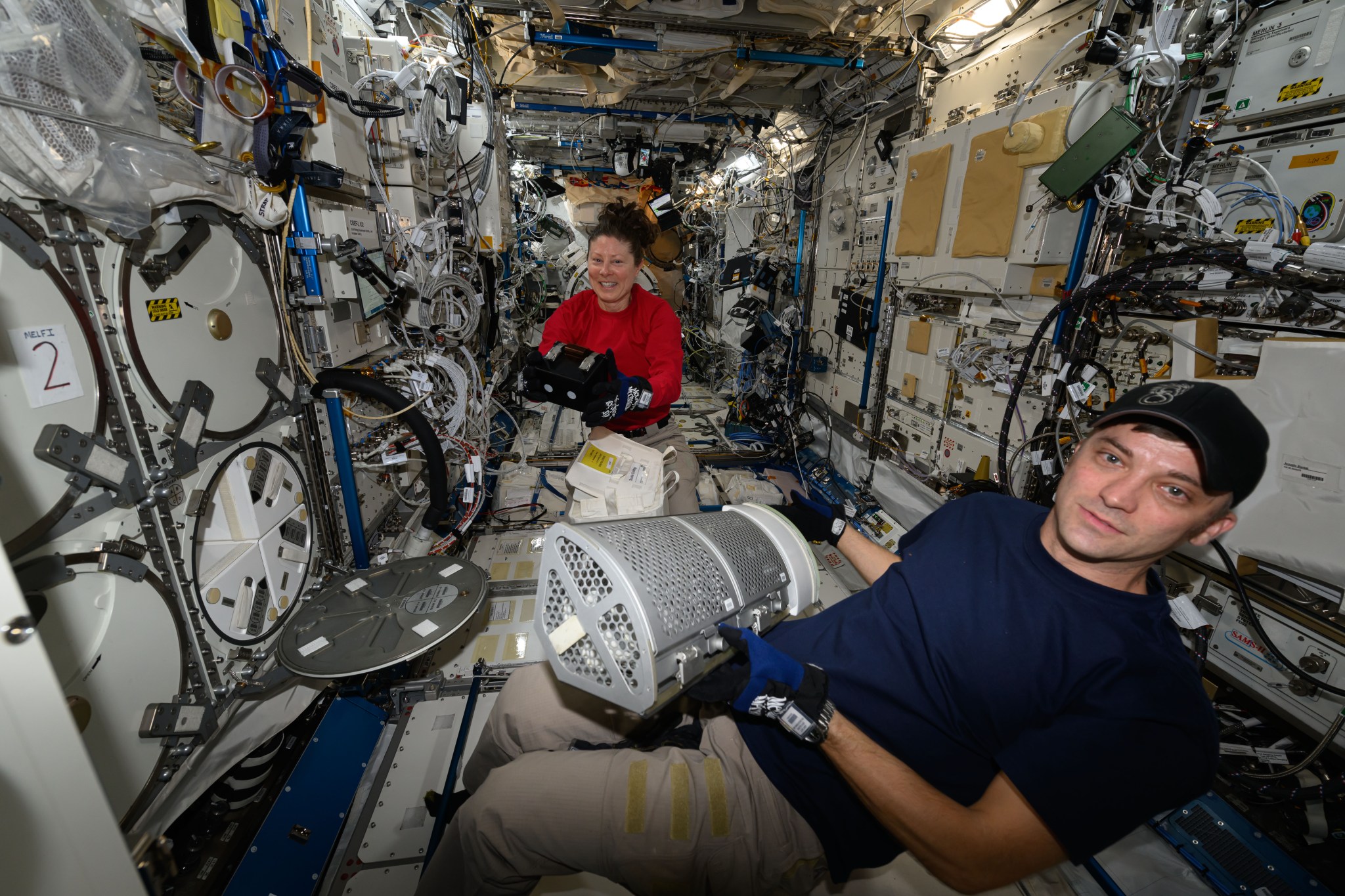4 min read

NASA astronaut Tracy C. Dyson is returning home after a six-month mission aboard the International Space Station. While on orbit, Dyson conducted an array of experiments and technology demonstrations that contribute to advancements for humanity on Earth and the agency's trajectory to the Moon and Mars.
Here is a look at some of the science Dyson conducted during her mission:
Heart-Shaped Bioprints
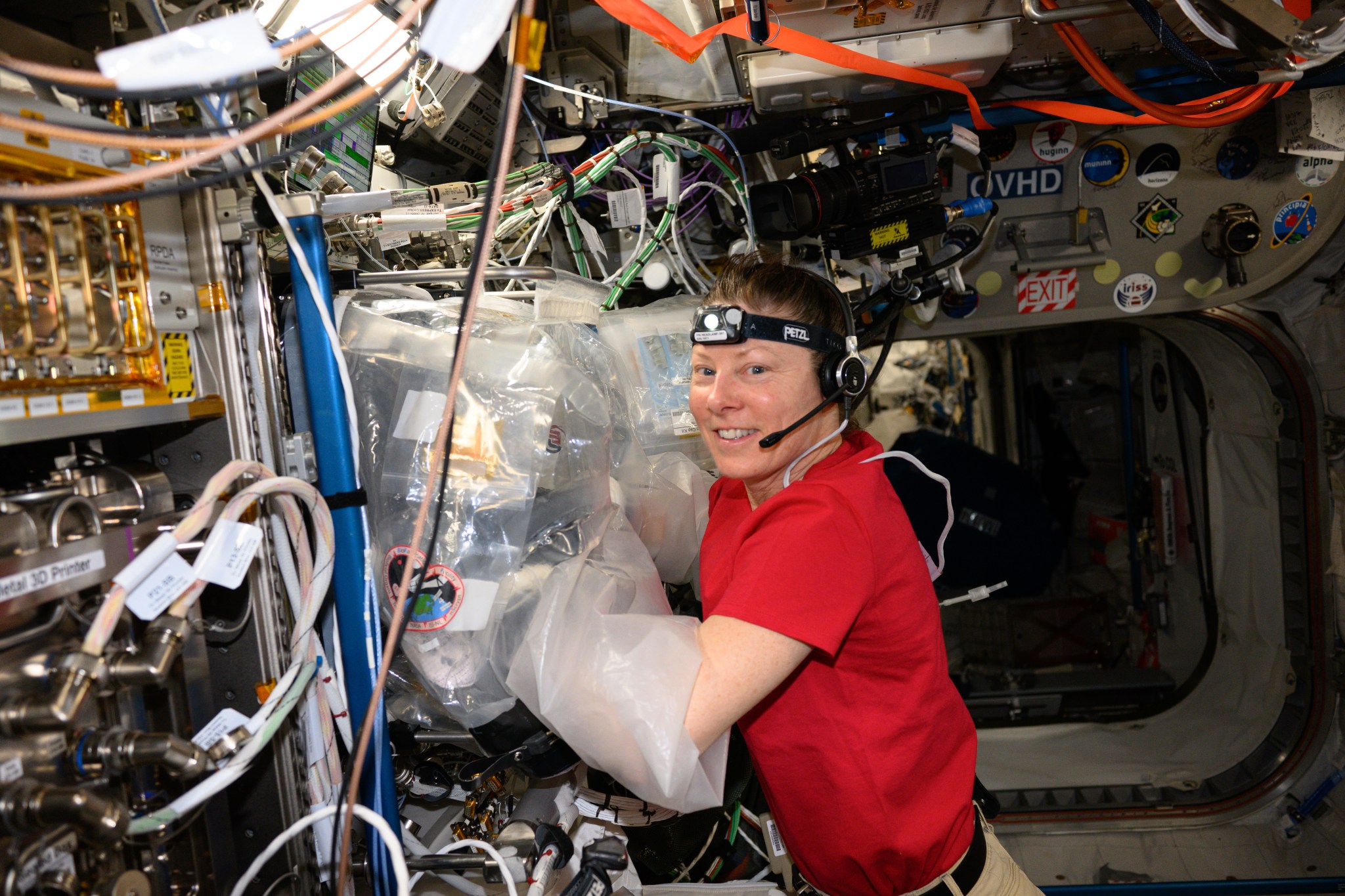
NASA astronaut Tracy C. Dyson operates the BioFabrication Facility for the Redwire Cardiac Bioprinting Investigation, which 3D prints cardiovascular tissue samples. In microgravity, bio inks used for 3D printing are less likely to settle and retain their shape better than on Earth. Cardiovascular disease is currently the number one cause of death in the United States, and findings from this space station investigation could one day lead to 3D-printed organs such as hearts for patients awaiting transplants.
Wicking in Weightlessness
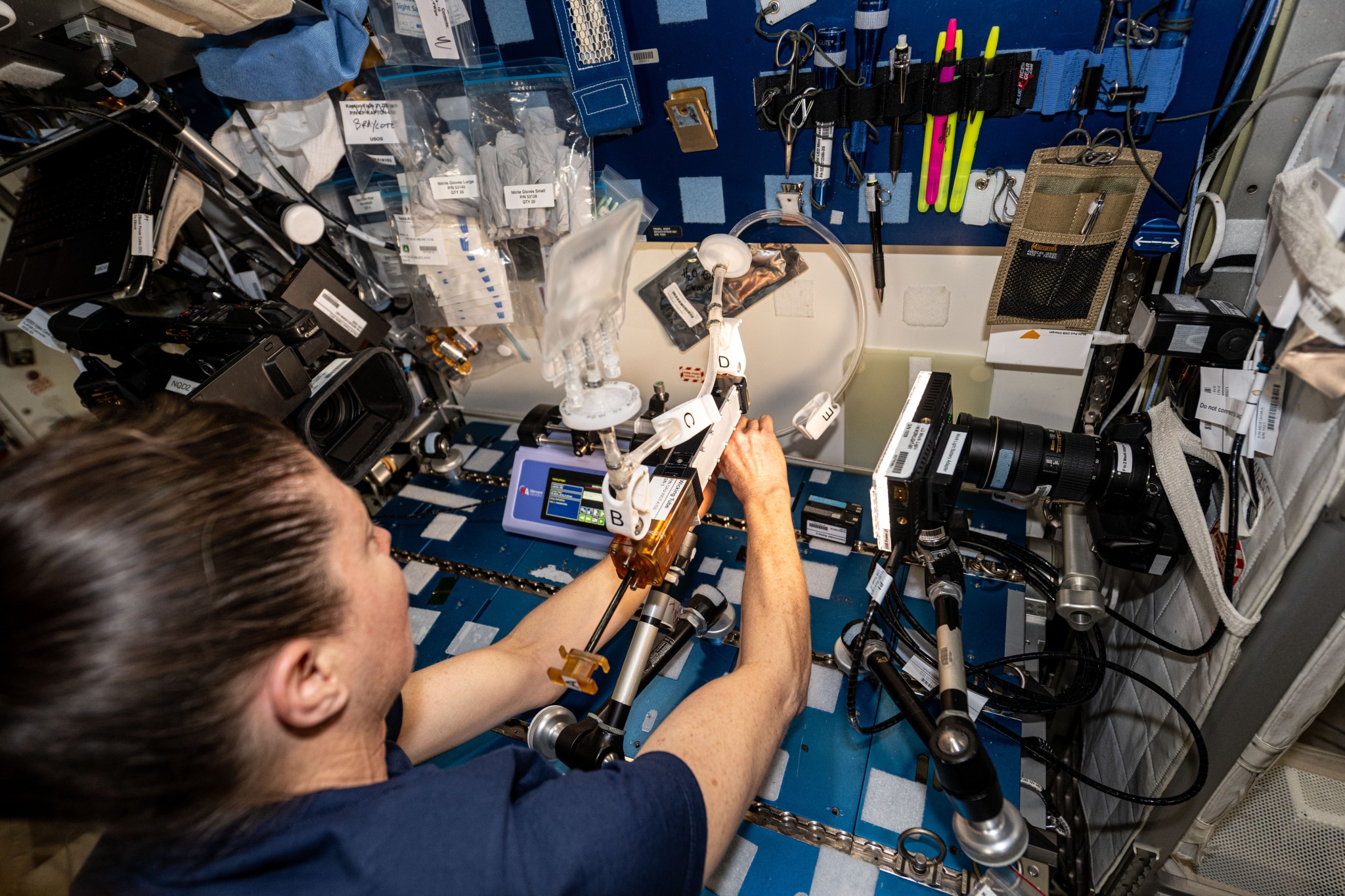
NASA astronaut Tracy C. Dyson handles hardware for the Wicking in Gel-Coated Tubes (Gaucho Lung) experiment. This study uses a tube lined with various gel thicknesses to simulate the human respiratory system. A fluid mass known as a liquid plug is then observed as it either blocks or flows through the tube. Data regarding the movement and trailing of the liquid plug allows researchers to design better drug delivery methods to address respiratory ailments.
Programming for Future Missions
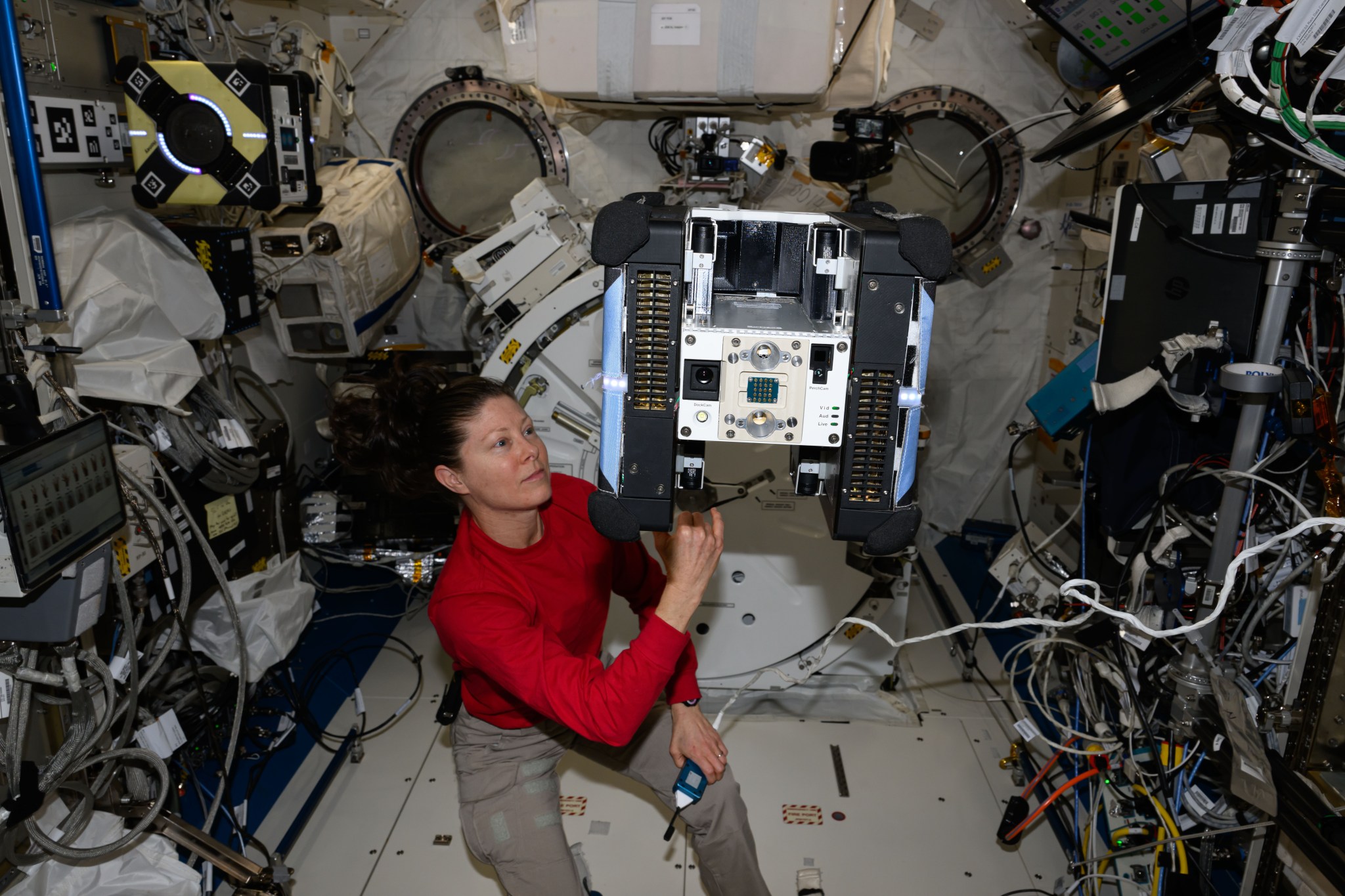
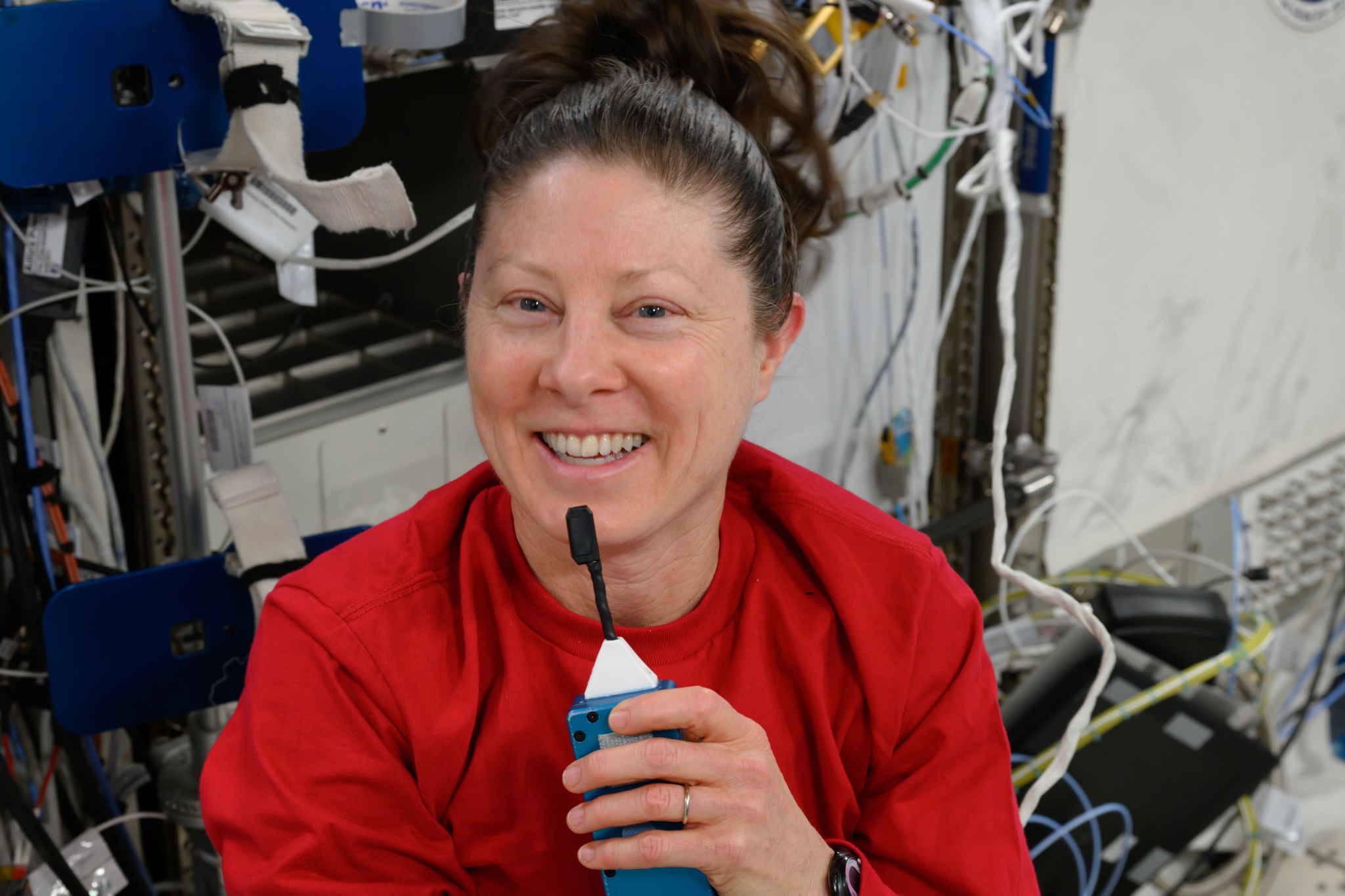
NASA astronaut Tracy C. Dyson runs student-designed software on the free-flying Astrobee robot. This technology demonstration is part of Zero Robotics, a worldwide competition that engages middle school students in writing computer code to address unique specifications. Winning participants get to run their software on an actual Astrobee aboard the space station. This educational opportunity helps inspire the next generation of technology innovators.
Robo-Extensions

As we venture to the Moon and Mars, astronauts may rely more on robots to ensure safety and preserve resources. Through the Surface Avatar study, NASA astronaut Tracy C. Dyson controls a robot on Earth's surface from a computer aboard station. This technology demonstration aims to toggle between manipulating multiple robots and "diving inside" a specific bot to control as an avatar. This two-way demonstration also evaluates how robot operators respond their robotic counterparts' efficiency and general output. Applications for Earth use include exploration of inhospitable zones and search and rescue missions after disasters.
Capturing Earth's Essence
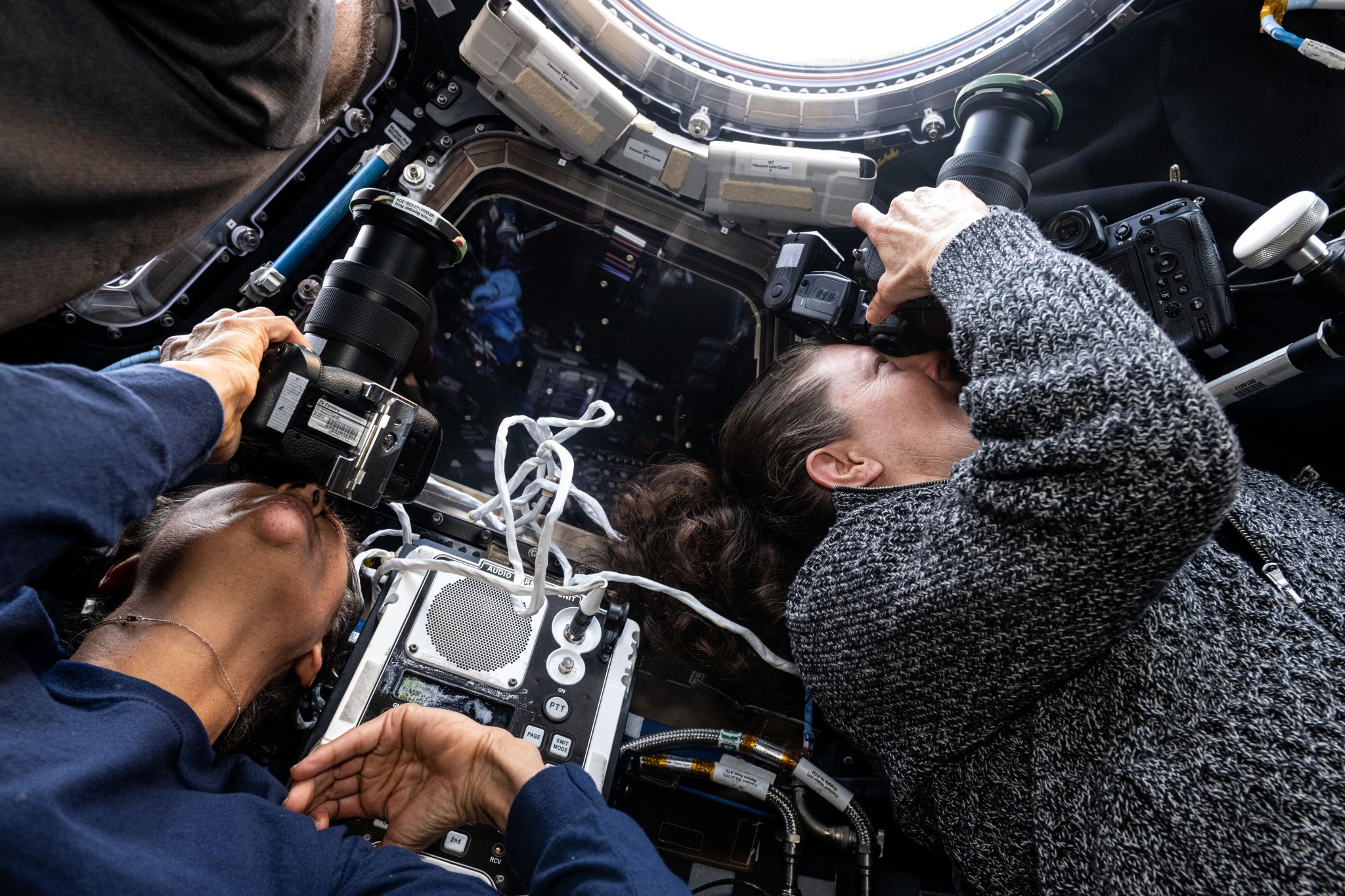
For Crew Earth Observations, astronauts take pictures of Earth from space for research purposes. NASA astronauts Suni Williams (left) and Tracy C. Dyson (right) contribute by aiming handheld cameras from the space station's cupola to photograph our planet. Images help inform climate and environmental trends worldwide and provide real-time natural disaster assessments. More than four million photographs have been taken of Earth by astronauts from space.
Multi-faceted Crystallization Processor
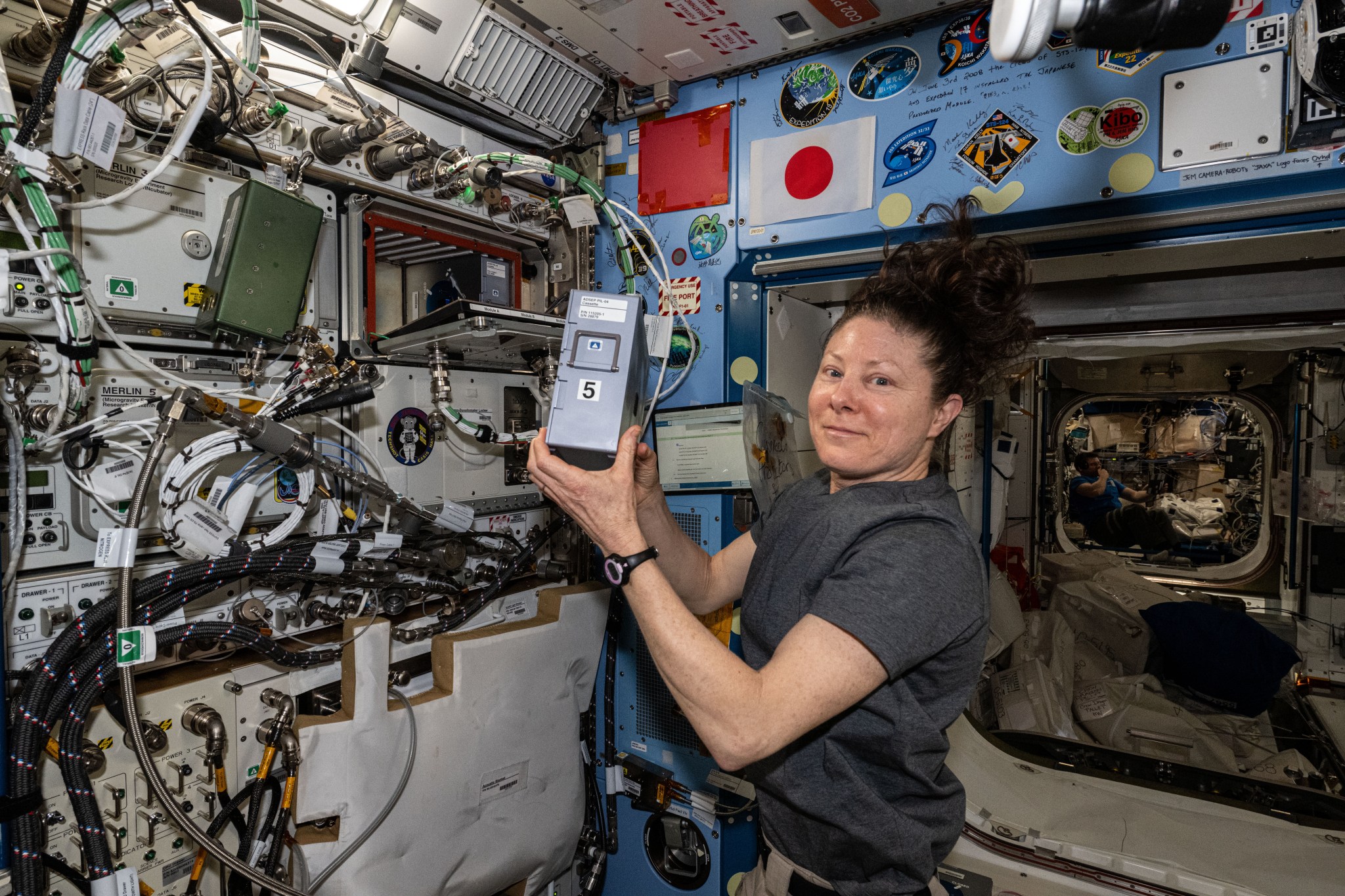
NASA astronaut Tracy C. Dyson holds a cassette for Pharmaceutical In-Space Laboratory - 04 (ADSEP-PIL-04), an experiment to crystallize the model proteins lysozyme and insulin. Up to three cassettes with samples can be processed simultaneously in the Advanced Space Experiment Processor (ADSEP), each at an independent temperature. Because lysozyme and insulin have well-documented crystal structures, they can be used to evaluate the hardware's performance in space. Successful crystallization with ADSEP could lead to production and manufacturing of versatile crystals with pharmaceutical applications.
Cryo Care
